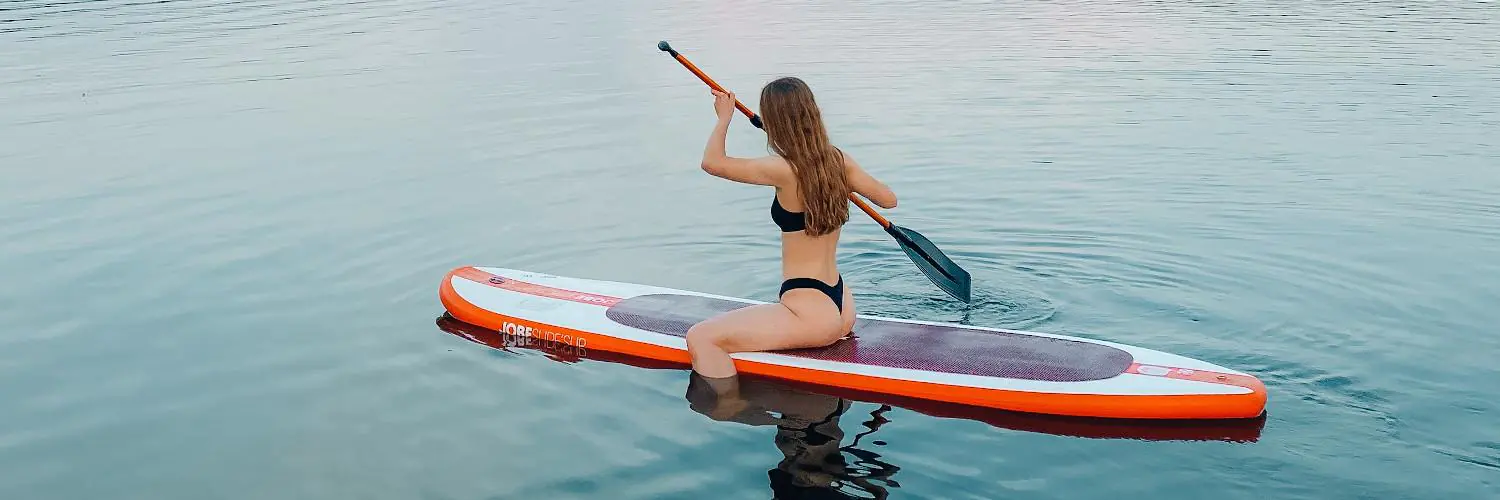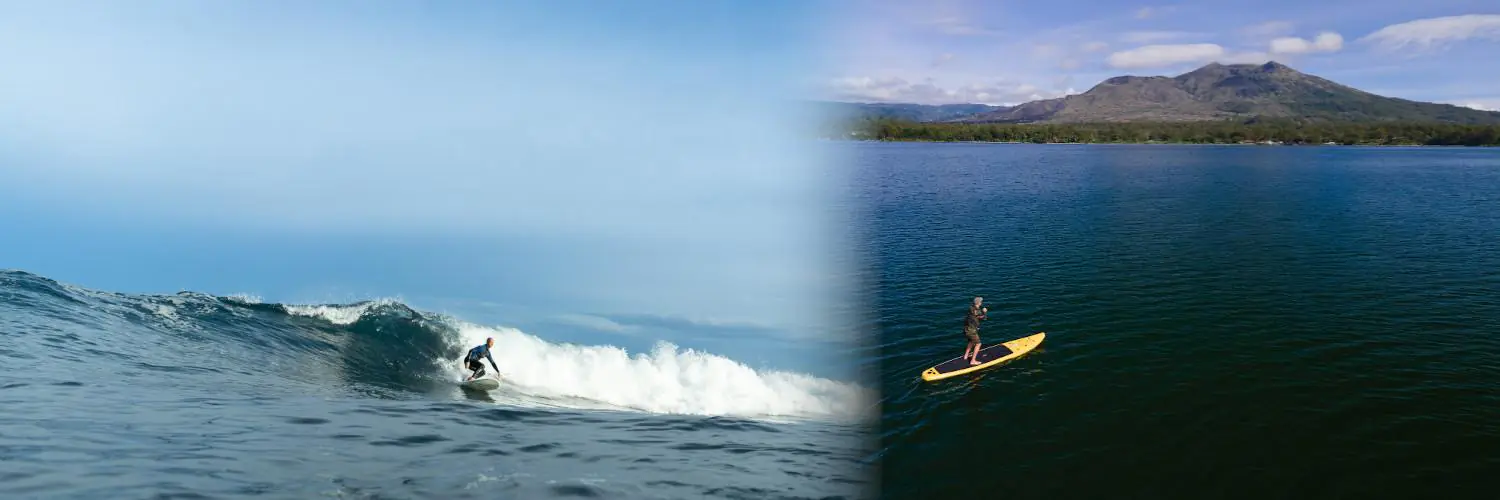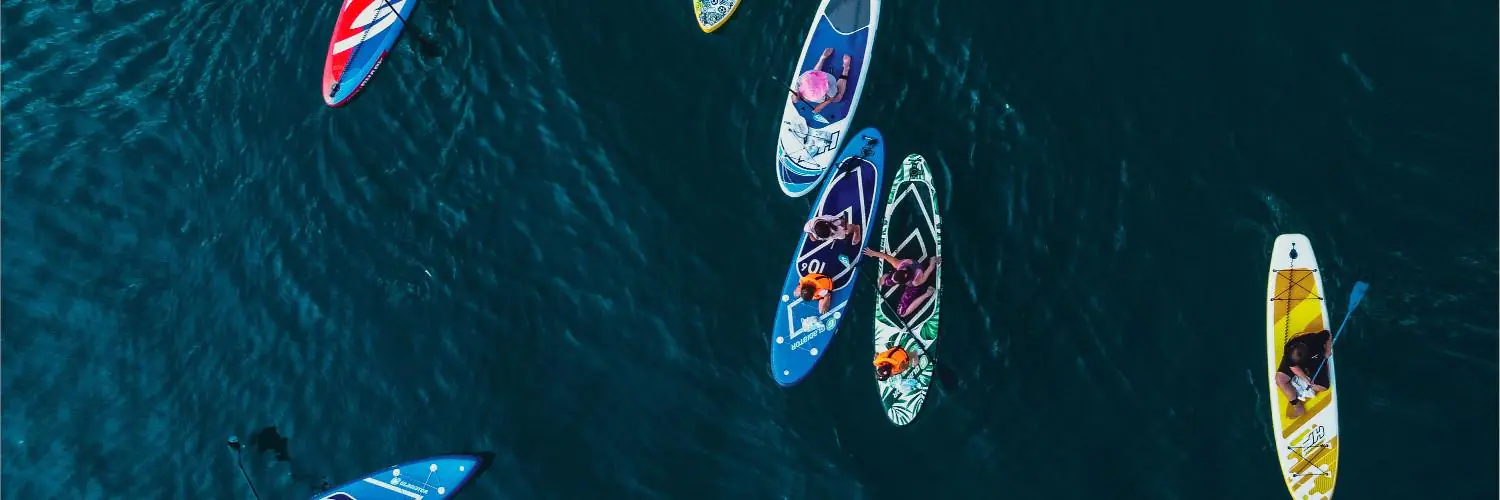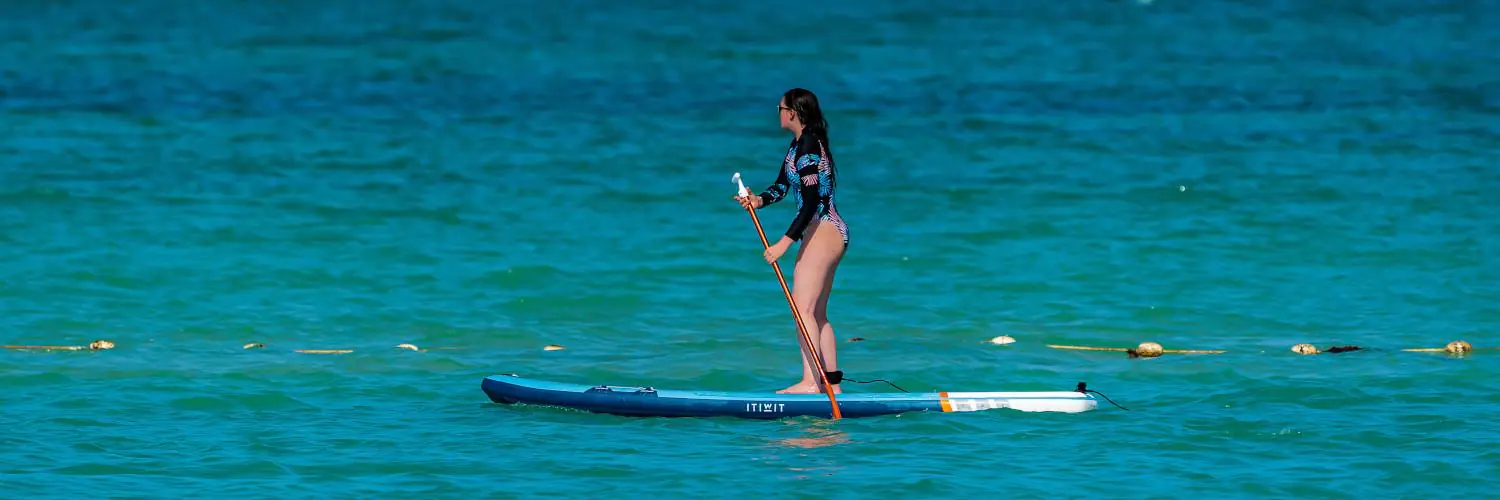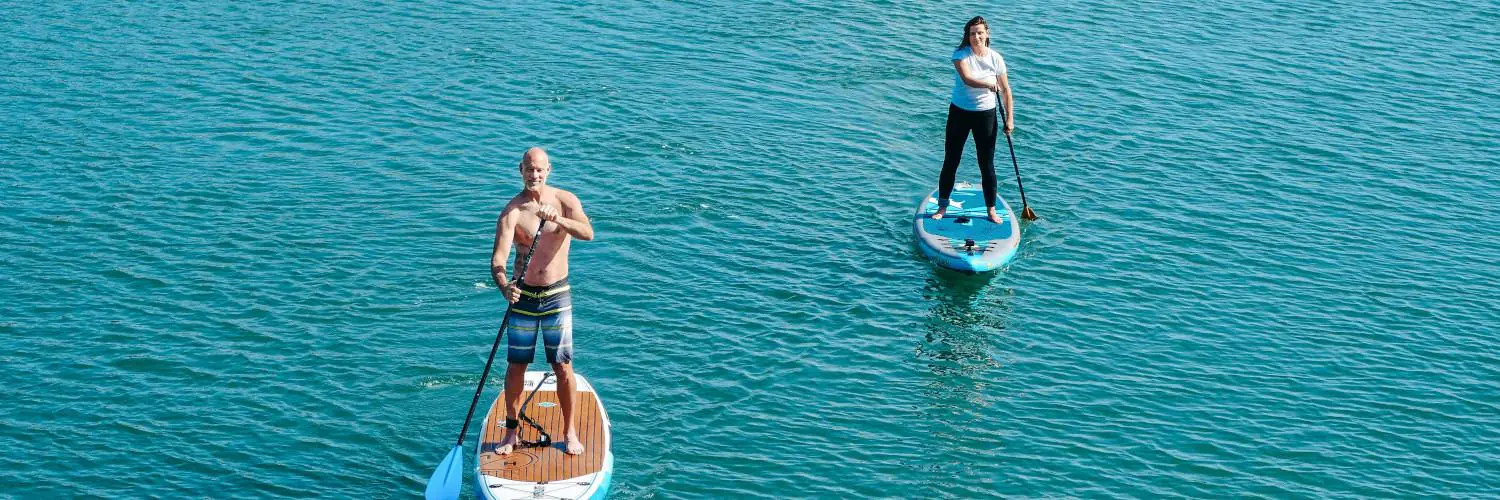Stand Up Paddling (SUP) is a popular water sport that combines elements of surfing and paddling. As its popularity grows, so does the importance of adhering to regulations set forth by authorities such as the U.S. Coast Guard (USCG). SUP boards used outside designated swimming, surfing, or bathing areas are classified as ‘vessels’ and are subject to certain USCG regulations to ensure the safety of paddlers and those around them.
Safety is a paramount concern when it comes to water activities. For SUP enthusiasts, this means understanding and complying with equipment requirements, especially regard to personal flotation devices (PFDs). Paddlers under the age of 13 are required to wear a USCG-approved life jacket at all times, while those over 12 years must have a life jacket on board. Additionally, it is mandatory to have a whistle or other sound-producing device to signal for help in case of an emergency or to warn other boaters.
While the basic equipment for paddle boarding is straightforward, there is more gear that one may need depending on the environment and duration of paddling. This includes selecting the correct paddle, which should reach the wrist of a raised arm when stood up in front of the paddler, ensuring efficient propulsion in the water. As paddle boarders take to various bodies of water, they must equip themselves appropriately to maintain safety and enhance their experience on the water.
Table of Contents
Understanding SUP
When selecting a stand up paddle board (SUP), one must consider the board’s use—ranging from calm water adventures to surf paddle boarding—and its construction materials, such as inflatable or solid models.
Fundamentals of SUP
The essence of stand up paddle boarding lies in its versatility and full-body workout potential. A typical beginner-friendly SUP is wide, thick, and long to ensure maximum stability. Here, they should pay close attention to the board’s:
- Length: Affects speed and maneuverability.
- Shorter boards (< 10 feet): Better for surf.
- Longer boards (> 12 feet): Ideal for touring and faster glide on flat water.
- Width: Wider boards provide more stability.
- Thickness: Contributes to volume, which helps to determine how much weight the board can support.
A paddle’s length should generally extend 6 to 8 inches above the user’s height for optimal reach and stroke efficiency.
SUP Varieties
Stand up paddle boards come in different types to suit various activities:
- All-Around SUPs: Versatile and great for beginners. Usually thicker, wider, and longer.
- Surf SUPs: Shorter in length with a narrower nose and tail for quicker turns and performance in waves.
- Touring SUPs: Longer, typically with a pointed nose (bow) designed for long-distance paddling in flatwater.
- Racing SUPs: Long and narrow, optimized for speed and straight tracking in competitive scenarios.
Material composition determines durability and performance:
- Inflatable SUPs: Excellent for storage and transport; constructed from PVC with drop-stitch technology.
- Solid SUPs: Made from foam, fiberglass, carbon fiber, or plastic. They are more rigid, offering better performance but require more storage space.
Decisions on board type must align with an individual’s intended paddling environment, their body size, and skill level to ensure the best SUP experience.
SUP Equipment
Selecting the right stand-up paddleboarding (SUP) equipment is essential for safety and performance. The choice of both board and paddle greatly influences the paddling experience.
Choosing the Right SUP Board
When selecting a paddleboard, one must consider the specific activity for which it will be used. Boards are generally categorized by their hull types: planing and displacement. A planing hull is wide, flat, and is versatile for all-around use, leisure paddling, and surfing waves. Conversely, a displacement hull has a pointed nose or bow, similar to a canoe, and is designed to cut through water, offering efficiency and speed for racing or long-distance touring.
Board Dimensions:
- Length: Boards designed for leisure (all-around) typically range from 10–12 feet. Racing boards measure 12’6" to 14 feet for optimal glide and speed.
- Width: A wider board provides stability and is ideal for beginners, ranging from 30 to 34 inches.
- Thickness: This affects the volume and weight capacity. A thicker board enables higher buoyancy, whereas a thinner board can be more responsive.
- Volume: It’s critical to choose a board with the appropriate volume based on the paddler’s weight, as it determines buoyancy and stability.
Material Types:
- Solid Paddleboards: Usually made of EPS foam covered with fiberglass or plastic, offering performance and durability.
- Inflatable Paddleboards (iSUPs): These provide convenience and portability, suitable for recreational paddlers and those with limited storage space.
Paddle Essentials
The paddle is an equally important aspect of SUP equipment. The length of the SUP paddle should be about 6 to 8 inches taller than the user for general purposes, but it can be longer for those looking to achieve more powerful strokes in racing or touring scenarios.
Paddle Features:
- Adjustable Paddles: Allow for length changes to suit different user heights and activities.
- Fixed-Length Paddles: Custom cut to the user’s specifications for a more personal fit.
- Materials: Paddles come in various materials such as aluminum, fiberglass, carbon fiber, or a combination. Carbon fiber paddles are lightweight and stiff, offering efficiency and less fatigue over long distances.
- Blade Shape and Size: Larger blades deliver more power but require more effort, whereas smaller blades are easier on the shoulders and are effective for quick, short strokes.
Matching the paddleboard and paddle to the user’s size and intended use is imperative for an optimal SUP experience.
Safety and Regulations
Safety on the water is critical, particularly for stand-up paddleboarding (SUP). It is essential for SUP enthusiasts to adhere to safety requirements and regulations that the U.S. Coast Guard enforces to ensure their well-being while partaking in this activity.
Life Jackets and PFDs
Children and Adults: The regulations stipulate that all paddleboarders under the age of 13 must wear a USCG-approved Type I, II, or III life jacket. Adults over the age of 13 must have a life jacket on board but are not required to wear it. However, it is highly recommended for safety.
- USCG-Approved PFDs: Life jackets for paddleboarders must be USCG-approved, ensuring the appropriate level of buoyancy and safety.
- Types of PFDs:
- Type I: Offshore life jackets designed for all waters, especially open, rough, or remote waters where rescue may be slow to arrive.
- Type II: Near-shore vests intended for calmer waters and fast rescues.
- Type III: Flotation aids suitable for various water activities where quick rescue is likely.
Coast Guard Compliance
Vessel Classification: The U.S. Coast Guard classifies paddleboards as vessels when used outside of swimming, surfing, or bathing areas, requiring them to adhere to certain safety rules.
- Safety Equipment Requirement:
- Personal Flotation Device (PFD): Must be USCG-approved and suitable for the paddler’s size.
- Sound-Producing Device: A whistle attached to the PFD satisfies this requirement.
- Lighting Device: During low-light conditions, SUP users should have a light to signal their presence to other vessels.
Navigational Rules and Signaling
Navigation and Communication: Adhering to navigational rules helps prevent accidents on the water. Paddleboarders should understand basic signals and right-of-way rules to communicate intentions and avoid collisions.
- Rules to Follow:
- Stay to the Right: Follow the “keep to the right” rule of navigation when approaching an oncoming vessel.
- Visibility: Use a light during periods of reduced visibility such as fog or night paddling to make your presence known to others.
- Visual Distress Signals: Carry devices fit for the body of water and the type of activity—required for coastal waters, the Great Lakes, territorial seas, and waters directly connected to them.
In compliance with U.S. Coast Guard regulations, a paddleboarder’s safety gear must include a properly fitting, USCG-approved life jacket or PFD, sound-producing device such as a whistle, and a light for visibility during times when visibility is diminished. Adhering to navigational rules and having a plan for visibility and distress signaling are also essential for safe paddleboarding experiences.
SUP Skills and Techniques
Mastering stand-up paddle boarding (SUP) requires both foundational skills and a commitment to continual improvement. A paddler equipped with the right techniques can maneuver efficiently and maximize their enjoyment on the water.
Basic Paddling Techniques
Proper paddle grip is the starting point for effective SUP skills. The hand should be placed on top of the paddle with the fingers wrapped around the handle, while the other hand grips the shaft, approximately halfway down. For balance and efficiency, paddlers need to maintain a slight bend in their knees and keep their back straight. The correct use of a tear-drop-shaped blade enhances power with each stroke, ensuring the blade fully enters the water before pulling it back parallel to the board for maximum paddling efficiency.
To initiate movement from a standing position, the paddler should engage their core muscles, extending the paddle forward with the lower arm and pulling the water back toward them. Paddle strokes should remain close to the rails (sides) of the board to maintain a straight trajectory and prevent unnecessary zig-zagging.
Advanced Maneuvers
Advanced SUP maneuvers require an intimate understanding of balance and paddle control. Cross-bow turns involve placing the paddle on the opposite side of the board to the direction one wishes to turn, employing a sweeping motion to change direction swiftly. Maintaining a low center of gravity by bending the knees can enhance stability during this maneuver.
For making quick lateral adjustments or moving sideways, the draw stroke is essential. This is achieved by extending the paddle out to the side of the board and pulling the water toward the board’s rail. This skill proves invaluable in adjusting the board’s position alongside docks or navigating through tight clusters of rocks or obstacles.
SUP Adventures
Stand Up Paddleboarding (SUP) is an exhilarating activity that offers a mix of adventure and tranquility. One can enjoy peaceful tours through calm rivers or lakes, and for the thrill-seakers, challenging the rapids or engaging in SUP racing. The requirements for a successful SUP experience vary depending on the environment and the nature of the trip.
Paddle Boarding EnvironmentLake Paddling: Ideal for beginners or those seeking a serene experience. Lakes typically provide stable conditions, allowing paddlers to focus on technique and enjoy recreational paddling, especially picturesque at sunset.
- Board Length: Longer boards provide more stability and storage space, beneficial for touring or camping adventures.
- Wind: On a windy day, a lower profile board minimizes resistance, and utilizing a leash is crucial for safety to prevent being separated from the board.
- Swimming Skills: Paddlers should be competent swimmers in case of falls, especially when tackling more significant bodies of water.
River Paddling: A dynamic environment that can vary from gentle flows to challenging whitewater rapids.
- Racing and Whitewater: Requires a specialized shorter board for maneuverability.
- Rapids: It’s essential to wear a dry suit to prevent hypothermia and an appropriate helmet to reduce the risk of injury.
- Weight Capacity: The board must have the appropriate weight capacity for the paddler and any additional gear.
Traveling with SUP
Traveling with a SUP board presents its own set of considerations for paddlers aiming to explore new waters.
- Board Length and Weight: Long-distance traveling is more manageable with an inflatable SUP due to its lighter weight and compact storage.
- Storage Space: When selecting a board, one must account for the space required to transport it. Inflatable boards can fit in a backpack, while hardboards need roof racks or trailers.
- Weight Capacity: Ensure the board’s weight is within the vehicle’s weight capacity limits to avoid strain or potential damage.
Heading out for a SUP adventure requires careful attention to the unique characteristics of the chosen environment and the practicalities of traveling with equipment. Whether cruising on a glassy lake or navigating the rush of a river, paddlers should prioritize safety gear, board selection, and skill level to maximize their paddling experience.

